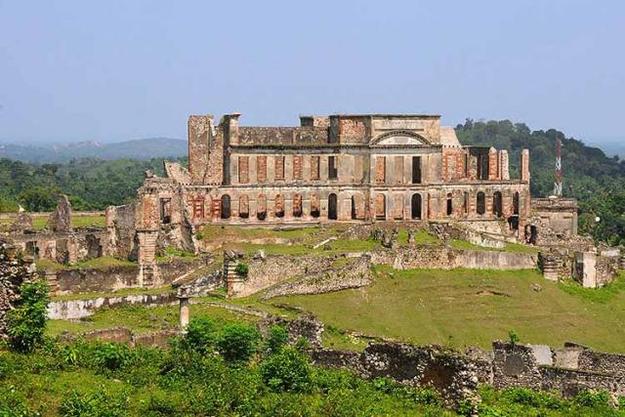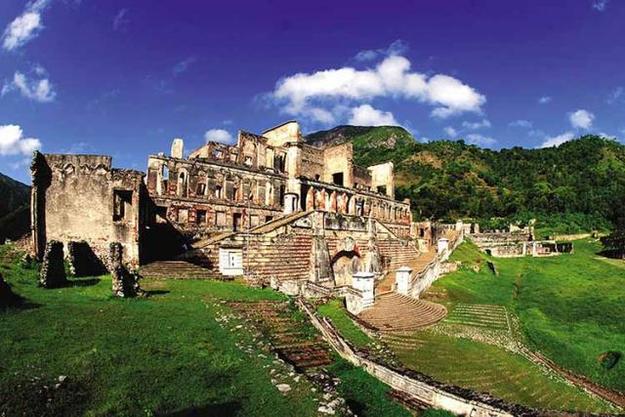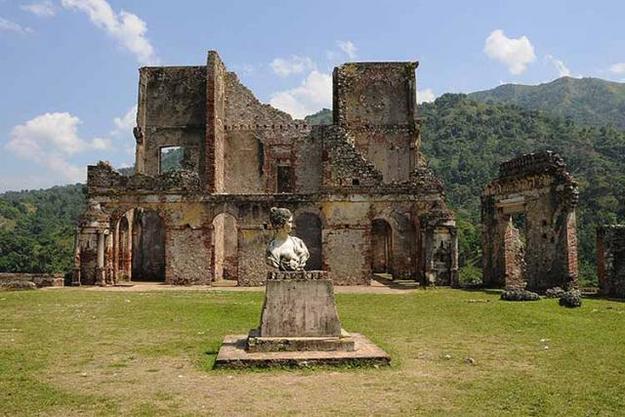Palace of Sans Souci
2012 World Monuments Watch
The majestic ruins of the Palace of Sans Souci stand amid verdant mountains in the north of Haiti. The site evokes the reign of King Henri I, known as King Henri Christophe, who was instrumental in the Haitian Revolution that won independence from France in 1804. This architectural complex was completed in 1813 as the residence and administrative center of King Henri. Its use proved short-lived, as it ceased to function as a political headquarters following the death of the king in 1820, and was damaged beyond repair in an earthquake in 1842.
The dominant feature of the complex is the symmetrical classical façade with its baroque double stairway and the vestiges of adjoining gardens and pools. Grouped around the grandiose palace in the form of an amphitheater are remnants of accompanying structures—administrative buildings, the prince’s residence, stables, barracks, a prison, an arsenal, a workshop, and a hospital. Sans Souci is an icon of Haiti’s national identity and is tied geographically, historically, and symbolically to the Citadelle Henry; the two, along with the buildings at Ramiers, comprise a UNESCO World Heritage Site.
Included on the 2012 World Monuments Watch, the palace withstood the earthquake in 2010, but faces other challenges. The city of Milot has expanded to the border of the site, and the need for natural resources, such as limestone and trees, is impacting the surrounding landscape. The site does not have sufficient tourist infrastructure and information to accommodate visitors, and the structures are not maintained regularly. The local authorities are committed to preserving the site and improving visitor infrastructure, and hope to foster community engagement with an arts and culture festival.




